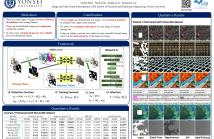
- Read more about TEST-TIME ADAPTATION FOR OUT-OF-DISTRIBUTED IMAGE INPAINTING
- Log in to post comments
Deep-learning-based image inpainting algorithms have shown great performance via powerful learned priors from numerous external natural images. However, they show unpleasant results for test images whose distributions are far from those of the training images because their models are biased toward the training images. In this paper, we propose a simple image inpainting algorithm with test-time adaptation named AdaFill. Given a single out-of-distributed test image, our goal is to complete hole region more naturally than the pre-trained inpainting models.
- Categories:
 31 Views
31 Views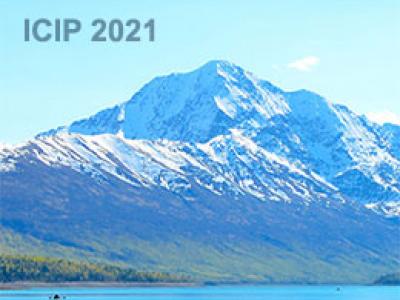
Generative Adversarial Networks (GANs) have been used recently for anomaly detection from images, where the anomaly scores are obtained by comparing the global difference between the input and generated image. However, the anomalies often appear in local areas of an image scene, and ignoring such information can lead to unreliable detection of anomalies.
- Categories:
 20 Views
20 Views
- Read more about Blockwise Temporal-Spatial Pathway Network
- Log in to post comments
- Categories:
 12 Views
12 Views
- Read more about IMAGE DEBLURRING BASED ON LIGHTWEIGHT MULTI-INFORMATION FUSION NETWORK
- Log in to post comments
Recently, deep learning based image deblurring has been well
developed. However, exploiting the detailed image features in a
deep learning framework always requires a mass of parameters,
which inevitably makes the network suffer from high computational
burden. To solve this problem, we propose a lightweight multi-
information fusion network (LMFN) for image deblurring. The
proposed LMFN is designed as an encoder-decoder architecture. In
the encoding stage, the image feature is reduced to various small-
- Categories:
 26 Views
26 Views
- Read more about poster--ROBUST VISUAL OBJECT TRACKING WITH SPATIOTEMPORAL REGULARISATION AND DISCRIMINATIVE OCCLUSION DEFORMATION
- Log in to post comments
Spatiotemporal regularized Discriminative Correlation Filters (DCF) have been proposed recently for visual tracking, achieving state-of-the-art performance. However, the tracking performance of the online learning model used in this kind methods is highly dependent on the quality of the appearance feature of the target, and the target feature appearance could be heavily deformed due to the occlusion by other objects or the variations in their dynamic self-appearance. In this paper, we propose a new approach to mitigate these two kinds of appearance deformation.
- Categories:
 15 Views
15 Views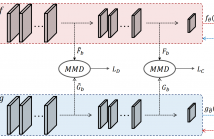
- Read more about A Consensual Collaborative Learning Method for Remote Sensing Image Classification under Noisy Multi-Labels
- Log in to post comments
Collecting a large number of reliable training images annotated by multiple land-cover class labels in the framework of multi-label classification is time-consuming and costly in remote sensing (RS). To address this problem, publicly available thematic products are often used for annotating RS images with zero-labeling-cost. However, such an approach may result in constructing a training set with noisy multi-labels, distorting the learning process. To address this problem, we propose a Consensual Collaborative Multi-Label Learning (CCML) method.
- Categories:
 19 Views
19 Views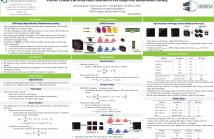
- Read more about SAROD: EFFICIENT END-TO-END OBJECT DETECTION ON SAR IMAGES WITH REINFORCEMENT LEARNING
- 1 comment
- Log in to post comments
- Categories:
 62 Views
62 Views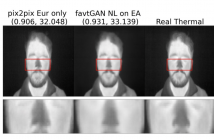
- Read more about GENERATING THERMAL HUMAN FACES FOR PHYSIOLOGICAL ASSESSMENT. USING THERMAL SENSOR AUXILIARY LABELS
- Log in to post comments
Thermal images reveal medically important physiological information about human stress, signs of inflammation, and emotional mood that cannot be seen on visible images. Providing a method to generate thermal faces from visible images would be highly valuable for the telemedicine community in order to show this medical information. To the best of our knowledge, there are limited works on visible-to-thermal (VT) face translation, and many current works go the opposite direction to generate visible faces from thermal surveillance images (TV) for law enforcement applications.
- Categories:
 12 Views
12 Views
- Categories:
 10 Views
10 Views